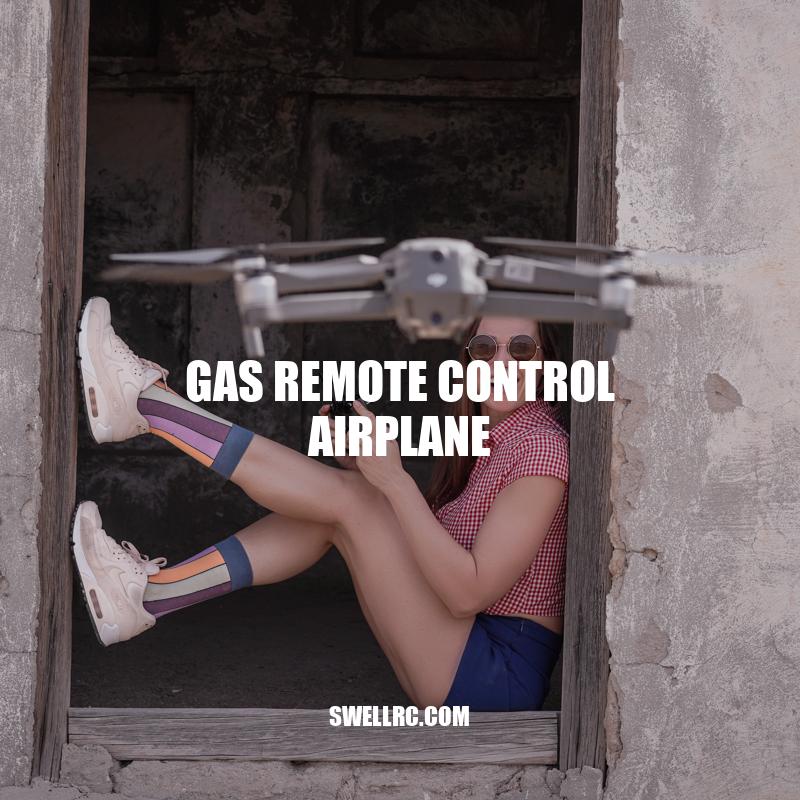Gas Remote Control Airplanes: The Ultimate Guide
Gas remote control airplanes, also known as gas-powered RC airplanes, are an exciting and challenging hobby for enthusiasts. Unlike electric RC airplanes, gas-powered RC airplanes run on gasoline and oil mixtures, making them a more powerful and realistic experience to control. In a world where technology is rapidly advancing, gas remote control airplanes harken back to classic old-school aviation. They are fascinating to watch as they soar across the sky, defying gravity as they twist and glide. For those looking to get into the hobby, it is essential to understand the mechanics behind it, the types available, safety precautions to take and maintenance aspects that are crucial to keeping the plane in top aerodynamic condition.
The Mechanics of Gas Remote Control Airplanes
Understanding the mechanics of a gas remote control airplane is essential to operate and enjoy it safely and efficiently. Here are some of the basics to keep in mind:
- The fuel system: Unlike electric remote control airplanes, gas-powered ones run on a mixture of gasoline and oil, known as gasoline oil mix (GOM).
- The engine: Gas-powered RC airplanes use two-stroke or four-stroke engines, which vary in their power output and fuel efficiency.
- Ignition source: Unlike electric airplanes that use batteries to power electric motors, the ignition source for gas-powered airplanes is a traditional spark plug.
- The RC transmitter and receiver: Which helps in controlling the airplane in the air using digital signals.
It is crucial to clear out any doubts and seek expert advice as one works through all the technicalities of operating a gas-powered RC airplane. There are plenty of resources available online, including forums such as Flying Giants and RC Groups, where hobbyists share their insights, advice and flying experiences with each other. For instance, if you want to explore the world of gas remote control airplanes, sites like Horizon Hobby offer a wide selection of models and kits to suit both beginners and advanced users.
How do remote controlled airplanes work?
Remote-controlled airplanes work by using a radio transmitter to send signals from the controller to the aircraft’s receiver and servos, which then move the control surfaces to change its direction, altitude, and speed. Some key components of these airplanes include:
- A transmitter that sends signals to the receiver on the airplane
- A receiver on the airplane that receives the signals from the controller
- Servos that translate the signals from the receiver into movements in the airplane’s control surfaces
- Control surfaces such as the ailerons, rudder, elevator, and throttle that allow the pilot to control the airplane’s motion
There are many remote-controlled airplanes available on the market today, ranging from small, indoor models to larger, outdoor ones designed for advanced pilots. Websites like Horizon Hobby and RC Universe offer a wide selection of remote-controlled airplanes and accessories for purchase.
Before choosing a gas remote control airplane, it is essential to consider the following factors:
- Experience level: Depending on your experience level, you’ll want to choose a model that is suitable for your skill level.
- Size: The size of the airplane can impact its durability, flight time, and performance.
- Type of flying: Determine the type of flying you’ll be interested in, such as aerobatics, gliders, or speed flying before choosing a model.
- Budget: Gas remote control airplanes require an initial investment of more than an electric RC airplane, depending on the model and its specifications.
Once you’ve identified your needs, below are some of the well-known brands and models of gas remote control airplanes that you may want to consider.
| Brand | Model | Experience Level | Price |
|---|---|---|---|
| Hangar 9 | Ultra Stick 30cc | Intermediate | $479.99 |
| Great Planes | Extra 300 SP GP-15 | Intermediate – Advanced | $279.97 |
| Phoenix Models | Mystique 2.9M GP/EP ARF | Intermediate – Advanced | $359.99 |
It’s always better to do thorough research before buying to make an informed decision. One can look for resources at online retailers such as HobbyKing, MotionRC, and Tower Hobbies, where you can find unbiased reviews of models and a plethora of user-generated content to guide you.
How far can a remote control plane fly?
A remote control plane’s flying range can vary greatly depending on its size, power, and operating frequency. Generally, a basic remote control plane can fly up to a range of 100 meters while advanced models can cover up to 3-5 kilometers. However, this also depends on the type of terrain and weather conditions. It is always advisable to check the specifications and limitations of the particular model before flying it. For more information on remote control planes and their capabilities, visit websites such as Hobbyking, Horizon Hobby, and RC Universe.
Flying gas remote control airplanes can be an exhilarating experience, but it’s important to follow some basic guidelines to ensure a safe and fun experience. Here are some essential tips to keep in mind when flying a gas-powered RC airplane:
- Find a suitable location with ample flying space and an open field to avoid obstacles.
- Check the weather before flying, as wind and rain can impact the flight performance of the airplane.
- Ensure that the gas-powered RC airplane is in good condition, and all components are working correctly.
- Always fly the airplane within your line of sight and avoid flying too far or too high.
- Gradually increase altitude and speed as you gain experience, and always avoid aggressive or sudden maneuvers that may cause the airplane to crash.
To enhance the flying experience further, consider experimenting with different flying techniques. Some popular techniques are:
- Loops: a basic maneuver where the airplane flies straight, climbs, and circles back down.
- Rolls: a technique where the airplane rotates along its longitudinal axis, which requires precise control of the altitude and speed.
- Inverted Flight: a technique where the airplane flips over and flies upside down, requiring precise control of altitude and throttle.
- Flying at low altitude: a technique that tests one’s maneuvering skills and requires swift and precise control of the airplane.
These techniques require a lot of practice, and it’s advisable to master the basics of flying first before trying more complicated maneuvers.
One website that can be helpful for learning some RC flying techniques is hobbyzone.com, which covers a wide range of topics related to RC planes, including in-depth guides, product reviews, and user-generated content.
Can I fly RC planes anywhere?
It depends on where you are located and what rules and regulations are in place for flying RC planes. Generally, it is not allowed to fly RC planes in all public spaces, such as parks, without permission. It is important to check with your local authorities and follow the rules and guidelines before flying RC planes.
There are websites such as the Academy of Model Aeronautics (AMA) that provide information on rules and regulations for flying RC planes. It is also recommended to use designated RC flying fields to ensure safety and avoid conflicts with other people or aircraft.
Some popular RC planes products and brands include:
- Traxxas
- Horizon Hobby
- HobbyZone
- Blade
Maintenance and Repair of Gas Remote Control Airplanes
Proper maintenance and repair of your gas-powered RC airplane are crucial to ensuring its performance and longevity. Here are some helpful tips for maintaining and repairing your gas remote control airplane:
- After every flying session, clean and inspect the airplanes’ different components, such as the engine, fuel lines, and filter, to detect any signs of wear or damage.
- Keep the airplane engine and fuel tank clean, and avoid using old or contaminated fuel.
- Always use quality parts when repairing or replacing any damaged parts and follow the manufacturer’s instructions.
- Lubricate the moving parts of the airplane to prevent corrosion and wear.
- Store the airplane in a dry and protected place, away from direct sunlight or moisture.
- If you’re new to maintaining a gas-powered RC airplane, consider taking a class or contacting the manufacturer for support.
It’s essential to have some dedicated tools to carry out any maintenance tasks or repairs. Here are some common tools you will need:
| Tool | Function |
|---|---|
| Screwdrivers | For loosening and tightening screws and bolts |
| Pliers | To grip wires or electrical connectors |
| Hex wrenches | For tightening hexagonal screws and bolts |
| Fuel tubing pliers | For attaching fuel tubing to the engine’s carburetor |
| Allen wrenches | To work with bolts that have hexagonal sockets for a head |
One website that can be of great help in finding the right parts and tools for your gas-powered RC airplane is horizonhobby.com. This website offers a vast selection of products, including replacement parts, tools, and accessories. Moreover, they provide detailed guides on how to maintain and repair your airplane, making it an excellent resource for beginners and seasoned hobbyists alike.
What is the best fuel for RC planes?
The best fuel for RC planes is typically a mixture of methanol, nitromethane, and oil. The specific ratio of each component will depend on the engine of the plane. It’s essential to use the correct fuel because using the wrong type can cause damage to your engine and affect performance. Here are some popular fuel brands for RC planes:
- Traxxas Top Fuel
- PowerMaster Nitro Race 25%
- Sidewinder Race 30%
- O’Donnell Speed Blend 20%
It’s important to choose a high-quality fuel to get the best performance out of your RC plane. Additionally, always follow the manufacturer’s recommended fuel type and ratio for your specific engine. For more information about RC fuel, you can visit hobby shops or manufacturer websites.
Conclusion
In conclusion, a gas remote control airplane can provide endless hours of fun and enjoyment for enthusiasts. However, it requires proper maintenance, repair, and flying techniques to ensure its longevity and safety. From selecting the right type of gas-powered RC airplane to using quality parts and tools for repairs and maintenance, every step is crucial.
By following the tips shared in this article, you can ensure you get the most out of your gas remote control airplane. And, if you are new to the hobby or have limited knowledge of flying and maintaining a gas-powered RC airplane, consider taking classes, watching tutorials, or contacting the manufacturer for help.
There are many resources available online that can provide assistance, including forums, websites, and online shops that offer quality parts and products. Just make sure to do your research and invest in quality products for the best experience.
In summary, a gas remote control airplane is a thrilling and engaging hobby that can bring you endless hours of fun. Always prioritize safety and proper maintenance to ensure long-lasting enjoyment.



